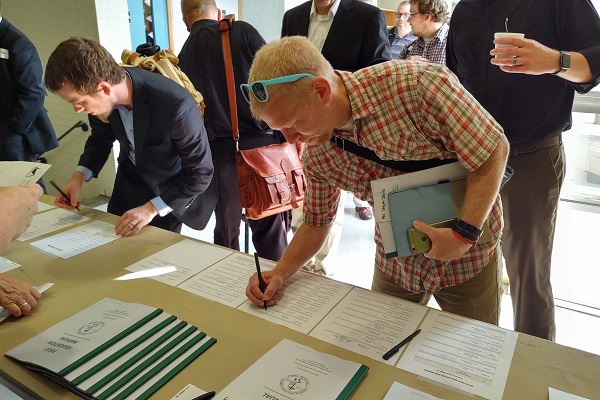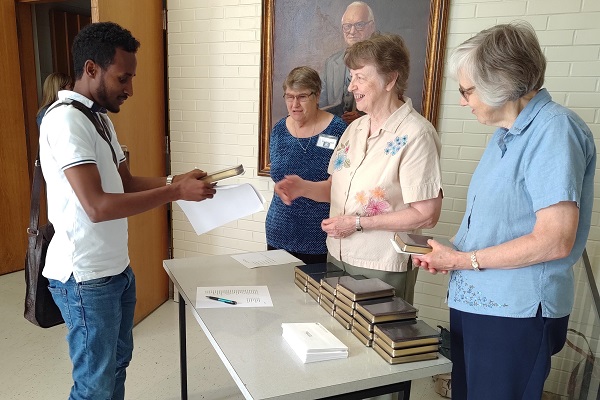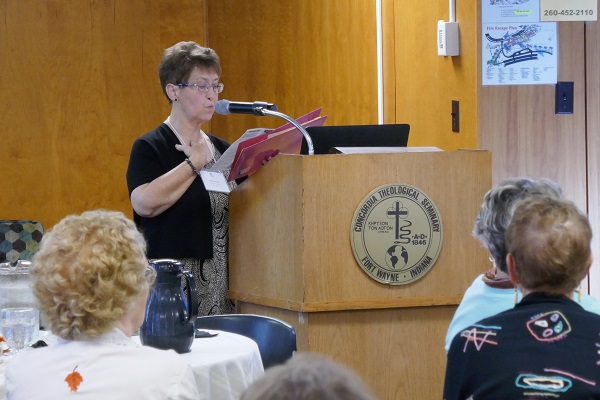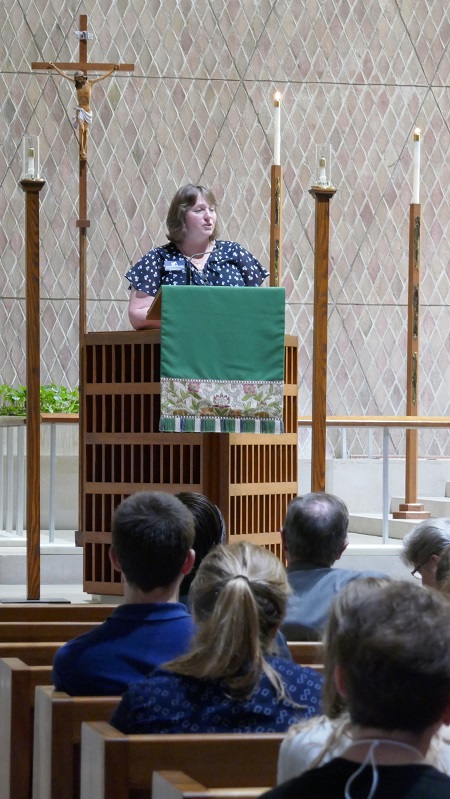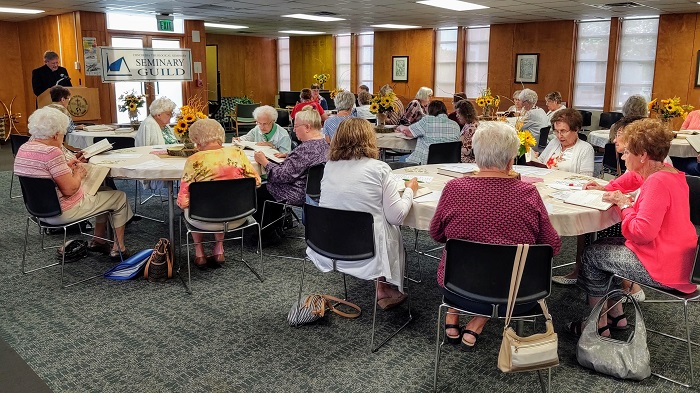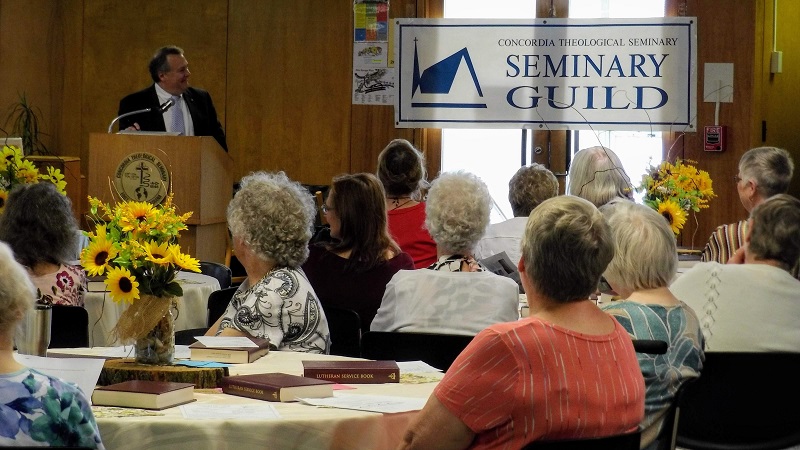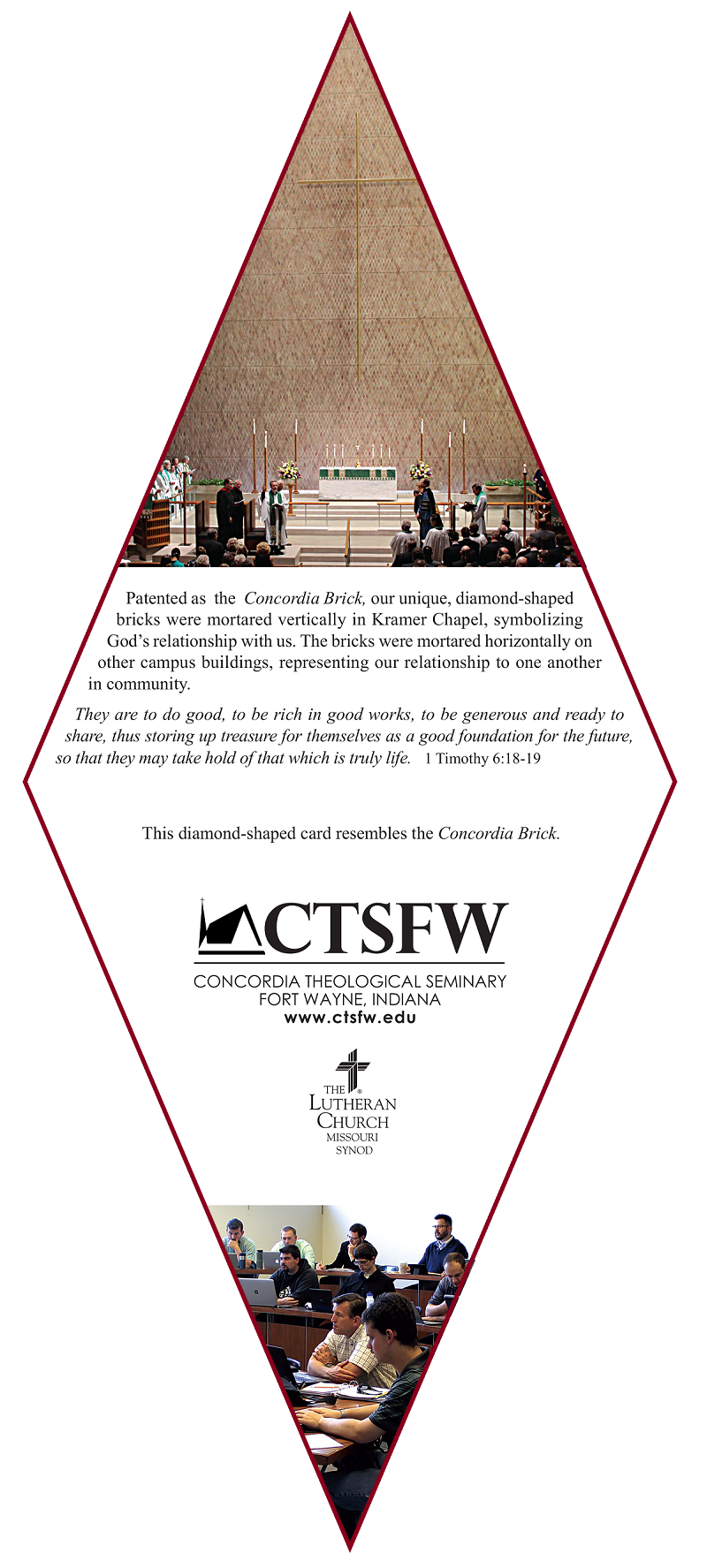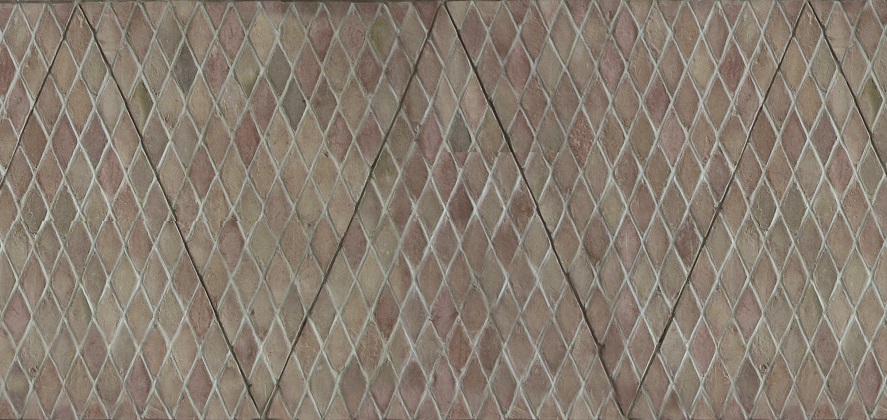Dr. Gieschen opens his presentation with a word of prayer.
OVERVIEW
In order to take a look at the entire Book of Revelation over just two days, Dr. Gieschen hit only the highlights during the Fall Retreat, focusing specifically on Christ and the angels. In fact, you see much more of Christ and the Trinity (especially the Holy Spirit) in Revelation than you do of random angels. The first few words of Revelation are absolutely vital for the understanding of Revelation: “The revelation [or unveiling] of Jesus Christ.”
“A lot of the problems in interpreting Revelation would be resolved by keeping these few words in mind,” Dr. Gieschen said. “Keep that focus and you’ll stay on track for what this book is all about.”
There are seven points to keep in focus when interpreting the Book of Revelation:
- Always remember the first verse: the person and work of Jesus Christ is the primary focus of Revelation.
- The language of Ezekiel, Daniel 7-12, Zechariah, and Isaiah are invaluable for interpreting the imagery found in the book. The number one reason why people struggle with Revelation is because we’re not immersed in the visionary prophesies of the Old Testament like the first-century Church (many of whom were Jews) would have been.
- Revelation was meant to be read/heard start to finish without interruption. It plays like a movie. Though there are some truly rough chapters, these do not exist by themselves as the entirety of the book puts all terrifying visions in perspective: Christ is victorious and already reigning.
- It is not written in chronological order. Some scenes flash forward, others back. The whole Old Testament is summarized in 12:1-4 and then the birth, death, resurrection, and ascension of Jesus is summarized in verse 5. “It’s a big flashback to show you the whole sweep of history, that Israel is waiting for this child to be born,” Dr. Gieschen explained of the image of the woman crying out in birth pains. “It’s distilling down a very complex picture of history.” In the latter half of chapter 7, time jumps forward to the end times. But that’s only a portion of the book. “There’s also a lot of present reality,” he added.
- The heavenly throne room in Revelation 4-5 is the most important scene in the entire book, as it sets the whole tone of the book. It depicts present reality in heaven as a result of the victory won by Christ’s life, atoning death, and resurrection on earth.
- The two portraits of Christ as the Glorious Man and the Slaughtered Lamb work together to present the full picture of Christ: His eternal nature (who He is, linked with the Old Testament) and the incarnate, flesh-and-blood Jesus (what He’s done, as recorded in the New Testament).
- Revelation contains symbolic imagery and numbers that must be interpreted for their meaning rather than literally. “I take the meaning literally, not the words literally. Just because Jesus is a lamb doesn’t mean he has wool, seven horns, and hoofs. He’s the sacrifice. That’s what it means.” More of this symbolic imagery will be explained throughout the summary.
An important part of teaching Revelation is to inoculate hearers against pre-millennialism, the belief that Christ will reign a literal thousand years (and many additional beliefs when all the prophetic imagery from Revelation is taken literally). Instead, we’re amillennialists: “We believe that Christ is already reigning and the thousand years is a symbolic length,” Dr. Gieschen explained. “When He comes again it’s not to reign on earth but to bring about the new heaven and the new earth, and the resurrection.”
[Please note: he went over more of the specific beliefs and why they are heretical (and dangerous), but to keep this already long summary shorter, CLICK HERE to read an article on millennialism (with one correction scribbled in by Dr. Gieschen), plus notes on certain mysteries like 666 and the mark of the beast.]
The “movie” of Revelation plays out in this way: the prologue puts it all in perspective (“The Revelation of Jesus Christ”), which is then followed by the letters written specifically to each of the seven churches in Asia. Chapters 4 and 5 present the key vision of the throne room (our present reality). The bulk of Revelation (chapters 6-16) cycles three times through seven woes, with breaks to remind us that, though the world is in agony, we are saved and being saved by Christ who is already reigning. Chapters 17-22 present the future of two women: a prostitute (Babylon) and the bride of Christ (New Jerusalem). The epilogue closes on the best of news: Jesus is coming.
CHAPTERS 1-3
First, it must be pointed out that we are not certain who John is. While he is possibly the apostle, what we do know for certain is that his name is John and he was important to the churches in Asia. A bishop, he oversaw the seven pastors of the seven churches in Asia, which would have each been a collection of houses churches. He was, essentially, a circuit visitor.
The loud voice that speaks to John to write down all he sees is a guiding angel. In the Book of Revelation it often says “John was in the Spirit,” so this angel is very closely linked with the Holy Spirit, who is either using a created angel to guide John or may Himself be manifesting as an angelic messenger to guide him. That he appears to be divine is made clear that he is the only angel that John attempts to worship. Though the angel tells John that he must not, this is not necessarily a sign that the angel is not the Holy Spirit, for the Spirit always points to Jesus and wants no worship apart from Him. “But don’t push it too far” Dr. Gieschen said.
The only other angel you see in these first chapters is the person of Christ, who appeared as the pre-incarnate Son even in the Old Testament. CLICK HERE to read more details about the Old Testament references that show who He is, from His face to His clothes, hair, eyes, feet, voice, and the two-edged sword coming out of His mouth. From the document’s summary: “Christ is depicted as…the visible manifestation of YHWH who showed himself at times to the prophets in the likeness of a man/son of man….this shows that he is fully identified with YHWH in this vision and in the understanding of John, the author of Revelation.”
The vision is also a message of comfort, specifically to the seven congregations, for Jesus is in their very midst with their pastors in His hand: “And on turning I saw seven golden lampstands, and in the midst of the lampstands one like a son of man…in his right hand he held seven stars” (1:12-13, 16).
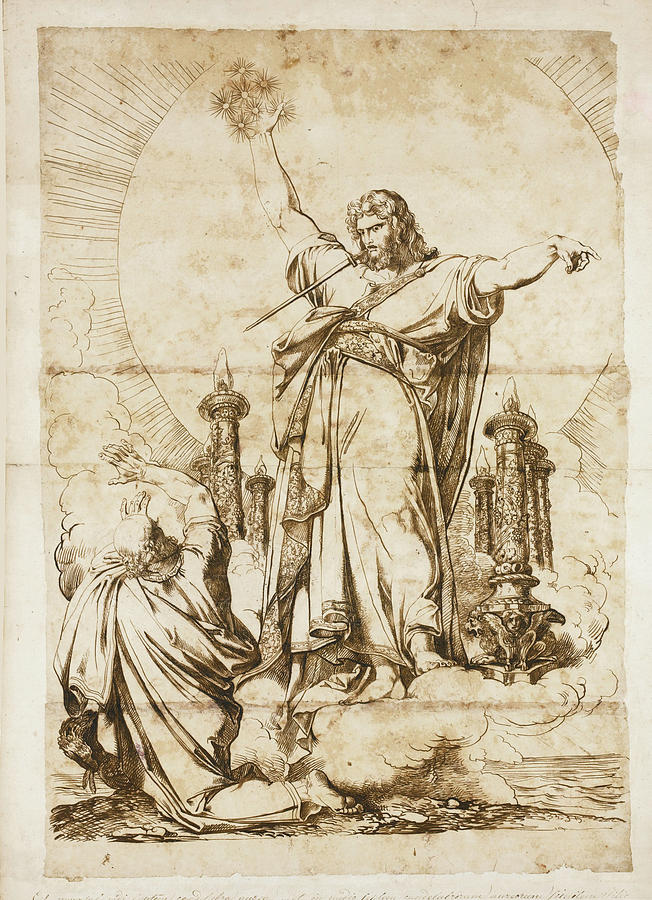
It is also a much broader message of comfort. “Like a son of man” is right out of Daniel. “The very one that Daniel saw, that Ezekiel saw, that’s the same God that is now become Jesus, died, risen, standing before John right there,” Dr. Gieschen explained. “Jesus is the eternal God seen by the prophets of old. For someone versed in the Old Testament, they’ll see the connection immediately. Not ascended and gone; ascended to be with His whole Church.”
The “Fear not” in verse 17 can also be translated to “Stop your fearing” from the original Greek. “And He gives him a reason not to be afraid. Crucifixion is central to His identity. The Book of Revelation wants you to never forget that the God who saved you is the God who died for you,” Dr. Gieschen said. We don’t judge God on our experiences (i.e. “I’m healthy, He loves me; I have cancer, He doesn’t” or even “My church is facing no challenges, He loves us; my church is fracturing over false doctrine, He doesn’t”). “We’re part of a reality where sin causes sorrow and death,” he acknowledged, “but we’re also part of a reality where sin has been overcome in Jesus and the future is going to be unfolded—not to a conclusion of all destruction, but to a restoration and resurrection.”
Though we were born spiritually dead, our first resurrection—a spiritual resurrection—occurred at baptism. We need not fear the second death in the lake of fire, for we are saved by Christ who is already reigning, as the entire Book of Revelation will show again and again. The second resurrection, at the last, will be a physical one.
The rest of the chapters in this section are the specific messages written to the seven chapters. They’re still instructive to the whole Church: each letter begins with a callback to the first chapter, bringing to mind the image of the risen Christ, and each letter ends with the Gospel—with a promise.
CHAPTERS 4-5
The vision of the throne room in chapters 4 and 5 sets the tone for the entire Book of Revelation. It is also the second most Trinitarian passage in the Bible (second to Matthew 28:19 “baptizing them in the name of the Father and of the Son and of the Holy Spirit”). All three persons of the Triune God are clearly present. The Father is seated on the throne (“he who sat there had the appearance of jasper and carnelian…who was and is and is to come,” emphasizing His eternity), the Holy Spirit is before Him (“before the throne were burning seven torches of fire, which are the seven spirits of God”; seven is a reference to the fullness of the Spirit, also referenced in Isaiah, and torches bring to mind Pentecost), and the Son (“among the elders I saw a Lamb standing”).
This is not the first prophetic vision of a throne room in the Bible. Daniel 7 and Ezekiel 1 also speak of God enthroned. “The picture speaks 10,000 words,” Dr. Gieschen said of the importance of imagery in these books. “Chapter 4 begins with ‘Come’ and John immediately goes through an open door.” Here is an instant visual of our access to the heavenly reality. John immediately steps from Patmos to heaven. “It’s an accessible and present reality. Not just: this is what it’s going to be like. It’s true right now. Through the Word of God you also have access. Through this vision, we too see it. We not only see it, we also participate in it when we attend Church. We are united with the Lord and angels. It’s a reality we participate in now.”
The Father, you’ll note, is never seen in the form of a man. On the throne His appearance that of stones (jasper and carnelian). The rainbow around His throne gives you a sense of the size and scale. Some have postulated that the 24 elders before the throne are from the 12 tribes and the 12 apostles, but Dr. Gieschen thinks there’s a better answer from 1 Chronicles: there were 24 classes of priests in the earthly temple. The heavenly temple is a reflection of that, representing those who have spoken for Christ and are serving Christ. The white garments and golden crowns indicate how we both serve Christ and reign with him. We are given a garment in baptism (the righteousness of Christ, depicted as a robe). “Someday will be given a permanent robe which can never be soiled,” Dr. Gieschen said. “Now we continue to wash it in blood.”
The four living creatures mark out a throne, and though each creature would later by symbolic of each of the Gospel writers, at the time they would have been simply reflective of creation (because God is Creator and the creation praises Him as such). And you’ll recognize this refrain the angels are singing: “Holy, holy, holy.” Angels also sang it in Isaiah 6 and we too still sing it thousands of years later. “We’re using the very words that are sung in heaven because we’re participating in that reality,” Dr. Gieschen said. “Yes we have both feet on earth, but we’re also participating in God’s presence with His angels in front of the throne.”
The most important scene comes in Chapter 5: “Who is worthy to open the scroll?” But rather than the glorious man we saw in chapter 1, we see the same Son in the midst of the throne, this time as the slain Lamb. Slain but standing in victory over death. The contrast is purposeful: we must understand that the God who is enthroned and ruling is the one who became true flesh and was sacrificed for us.
“Lamb” is used 28 times in Revelation, many more times than any other names of Christ. The crucifixion is central to His identity and how we should understand God. Each detail of the Lamb is a whole volume of Christology on who Jesus is and what He’s done. In Daniel, one horn is a symbol of power; the seven horns here show that He is all powerful. Trinitarian unity is also depicted: the Lamb has seven eyes (the fullness of the Spirit is present with the Son) and He is in the midst of the throne where the Father sits.
The slain Lamb also joins two important festivals: Passover and the Day of Atonement. Jesus died on Passover and accomplished atonement through His death. All the theology of the Day of Atonement is brought into the Passover feast.
“Don’t ever leave chapters 4 and 5 behind when you read the rest of Revelation,” Dr. Gieschen said. “This is a present, ongoing, and eternal reality. The Book of Revelation wants you to have this in mind as you go into the cycle of sevens. This is still true: the Lamb is reigning. You are part of that reality, you are participating in this, even as you experience disasters, war, death, etc. That’s what it’s like now, not just when you get to heaven. You are participating in this, you are citizens of this; heaven isn’t just up there after we die. Heaven is accessible. We followed John into the open door, opened by Christ.”
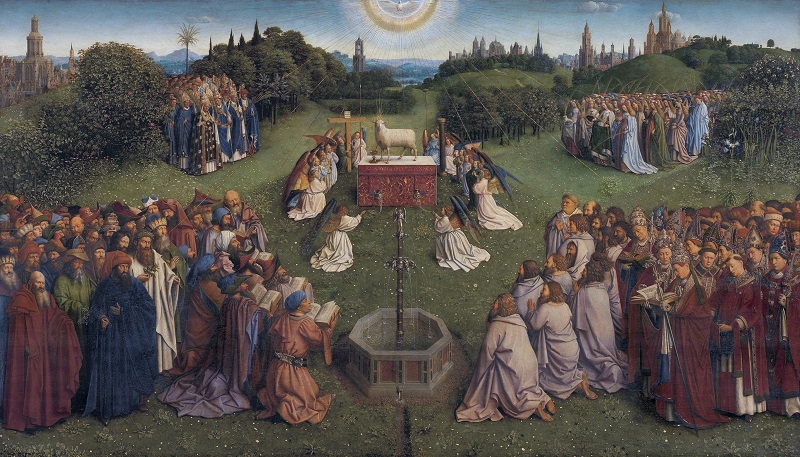
[Please note: it is exceptionally difficult to find an artistic depiction of the throne room that does not bring some theological problems into the interpretation, most obvious of which is that God the Father is always shown in the figure of a man when He is never depicted as such in the Bible. Christ is always the visible image of God. “They can’t seem to help themselves,” Dr. Gieschen noted during the presentation as he showed art examples from across history. Even this altar piece didn’t entirely get a pass; the Lamb isn’t bloody enough. “The Lamb was slain,” Dr. Gieschen emphasized. Angel wings are another thing artists add when they shouldn’t. They’re only an occasional feature of angels and, more unfortunately, are misleading when they’re used to depict a passage that is actually about Christ.]
CHAPTERS 6-16
Where the throne room shows the present reality in heaven, the three cycles of seven woes in chapters 6-16 (seals, trumpets, and bowls) show the reality of this present age on earth. These disasters are a reminder to us that we need the deliverance that God has won. They function as Law. The Book of Revelation does not sweep the disasters of this age (from eschatological disasters to blood, famine, and war) under the rug or try to wrap it up in clean linen.
The first cycle showcase the four horsemen of the apocalypse, who, outside of the actual Book of Revelation, get more press than Jesus. “But who is opening the seals that release the horsemen?” Dr. Gieschen asked. “The Lamb. He’s always in the picture, in control.”
Also, joyful and comforting passages consistently show up between the cycles of sevens. Chapter 7 is such a break, with the sealing of the 144,000. We also see angels mentioned once again. The four angels in verses 1-3 would have been created beings, but “then I saw another angel ascending from the rising of the sun” is a messianic figure. Jesus comes from the East (Ezekiel 43:102) with deliverance.
The 144,000 is a symbolic number of the finite number of Christians on earth at any given time, with the 12,000 from each tribe of Israel showing that the Church is the New Israel. It’s a comforting message: God can number all the true believers at any time in any age. And the best image of the sealing of the 144,000 would be a baptismal font. In baptism we are sealed with God’s name (Father, Son, and Holy Spirit) on our foreheads, marked as one redeemed. Your baptismal identity is foundational. You are a child of God for all eternity. All other identities change and fade, but the name of God on your forehead is the root of your identity. “So right in the middle of all this disaster,” Dr. Gieschen said of chapter 7 in the midst of the cycles of woe, “you’re claimed. It’s great reassurance that no matter what is going on, you are Christ’s.”
Verses 9-17 then jump forward to the end of time, helping any readers/listeners of the text living in the here and now to be comforted by the future. “Your life isn’t just what’s happening now or next week or next year; it is your reality for eternity.” God promises both here and in Isaiah to wipe the tears from every face. We do not have to wait until the end of Revelation to be assured that there will in the future be no more death, sin, or tears of sorrow. You are given a foretaste in the vision to help sustain you through the cycle of sevens. And there is another distinctive parallel and contrast: the curse on man in the garden in Genesis 3:9 (“By the sweat of your face you shall eat bread”) and now a promise in Revelation 7:16 (“They shall hunger no more…the sun shall not strike them”).
At least one if not two persons of the Trinity are present in chapter 8. The seven angels standing before God who are given seven trumpets may be the Holy Spirit (one of the seven angels is later proven to be John’s guide in chapter 17), and “another angel” then comes in verse 3 to stand before God where He begins serving as the heavenly high priest, mediating for us and giving us access to the Father. Sound familiar? “Since then we have a great high priest who has passed through the heavens, Jesus, the Son of God, let us hold fast our confession….Let us then with confidence draw near to the throne of grace, that we may receive mercy and find grace to help in time of need” (Hebrews 4:14, 16).
The mighty angel in Revelation 10 is an even more prominent example of an angel whose true identity is Christ. Though the word “angel” makes interpreters nervous (as Dr. Gieschen put it), the details are all there: “from heaven”; “wrapped in a cloud” (characteristic of God on Mt. Sinai and in the tabernacle); “rainbow over his head” and “face like the sun” (callbacks to chapter 1), and the scroll in his hand (the scroll here appears smaller than it did in chapter 5, likely because it was first opened while He appeared as a Lamb and now He is a much mightier figure). He also raises his right hand and swears, an image that parallels both Deuteronomy 32 and Daniel 10; God swears in the first and the divine man (the pre-incarnate Son) swears in the second. John is told to eat the scroll just as Ezekiel was in Ezekiel 3.
“Christ is an angel in terms of office, not ontology,” Dr. Gieschen explained. “He functions as a messenger but is not a created being.” As to the eating: “This is what I seek to do to my students,” he said. He feeds them the Word of God and what comes out: “The Word they have ingested.” You proclaim what you eat. “You are not speaking your own words, but the Word of God.”
Once the second woe passes but before the third woe comes, there is another callback to the throne room in chapters 4 and 5 in Revelation 11:15: the twenty-four elders fall on their faces before God and worship. For all that the three cycles of the seven woes are still ongoing, the Book of Revelation speaks most commonly about the victory of Christ. “It presents reality (Satan, death, destruction), but in perspective: it is an encouraging book,” Dr. Gieschen said.
Chapter 12—the chapter that features Michael and the angels in the war in heaven—begins with a chronological retelling of history. Verse 1-4 reviews Old Testament history. The pregnant woman is not the Virgin Mary, as is popularly argue, but Israel. The language matches that of Joseph’s dream in Genesis 37, of the nation as the sun, moon, and stars. She is longing for the birth of the Messiah while Satan is a dragon that swept down a third of the stars—a reference to the angelic rebellion. “This is his propaganda,” Dr. Gieschen said of the awful description of the dragon. “He wants us to think he’s a divine being. But peel away the propaganda and he’s a created angel.”
The dragon tries to thwart God’s plan of salvation by waiting to swallow the Messiah, but he fails: verse 5 is a very quick distillation of Christ’s birth, earthly ministry, and ascension (“caught up to God”). In verse 6 the woman—faithful Israel/the Church—flees from the dragon and is protected by God for 1,260 days. Those symbolic 42 months (three and a half years) is the same length of time of the famine in ancient Israel during the days of Elijah. It also seemingly contradicts the thousand year reign of Christ promised later in chapter 20. So is the time of the great tribulation between Christ’s first coming and His second coming a short time or a long time?
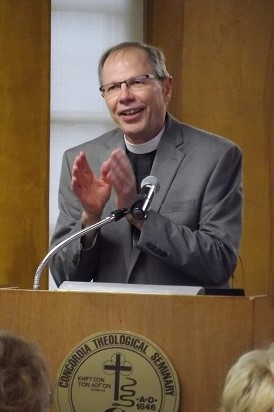
“Yes!” Dr. Gieschen declared. “From God’s perspective it’s a short time, from our perspective it’s a long time.” The contrast is purposeful. “One emphasizes that it is a limited time and the other emphasizes that it is a larger time, but both work together to emphasize the fact that God isn’t going to let this go on forever and ever. The time is short and yet we don’t know how long.”
Revelation 12:7-11 (the war in heaven featuring Michael and all angels) immediately follows this quick history lesson. “This is describing what is going to happen in heaven because Jesus won the victory on earth,” Dr. Gieschen explained of the passage. “Michael and the angels won the victory by the blood of the Lamb. We don’t go after Satan with heat-seeking missiles; Christ has already defeated him. We use what Christ has done against Satan.
“One of the most powerful activities against the action of Satan in the world is to worship,” Dr. Gieschen went on. Why? “Because you are saying: this is the true God and I’m receiving His victory.” In worship, God serves us with His victory and life. “Worship foils everything. There is where we receive the victory of the Lamb. There we are empowered to be faithful witnesses out in the world.”
Michael and the angels enforce Christ’s victory over the devil and his followers, for “there was no longer any place for them in heaven.” Throughout the Old Testament you can find examples of Satan in God’s presence (like in the Book of Job), where he brings accusations against God’s people. But now “the accuser of our brothers has been thrown down, who accuses them day and night before our God.” This activity has come to an end. In his place we have a high priest who pleads on our behalf before His Father night and day. “And they [the whole Church] have conquered him by the blood of the Lamb” (verse 11).
God could and did forgive sins before this moment in history, but it was on the basis of a future sacrifice. The devil could still say sins have not yet been paid. But all that is over. We need not even be haunted by the guilt of our past sins. Satan cannot accuse you before God; he cannot accuse you to your face. We can rightly say: “Go to hell where you belong.”
Michael, the leader of God’s armies, wields the sword of God’s Word. Michael is not Christ, evidenced by the fact that he bears a distinct name. Michael is not conquering Satan—he’s enforcing the victory that Christ has won through the blood of the Lamb.
The two beasts rising out of the sea and earth in chapter 13 are a parody enacted by Satan to imitate the Holy Trinity. The dragon is his attempt at the Father, the first beast performs signs and wonders like the Son, and the second makes people worship the first—a mockery of the Holy Spirit who always directs worship to the Son. The dragon and the two beasts are also not one-and-done deals. They are symbolic of the devil’s activity during every age, representing all the false gods, false christs, and false worship that throws itself against the Church in every generation.
In addition, the mark of the beast is Satan’s imitation of the name we bear as baptized children of God; it isn’t visible any more than the sign of our baptism is. “You know whether a person is a believer or unbeliever based upon whose name they bear or confess,” Dr. Gieschen explained in one of his handouts. To learn more about the mysteries of interpretation in Revelation 13, 16, and 20, CLICK HERE.
In chapter 14 we are once more presented with the 144,000, baptized with the name of God on their foreheads. This is the final rest stop before the last cycle of seven. It is another refreshing moment in the midst of the doom and gloom, an image of the saints who know the true God and sing his praise along with the host in heaven, though these saints are still on earth—but with the Lamb in their midst. “The Gospel will continue to be proclaimed even in the midst of all these challenges,” Dr. Gieschen said. “God uses faithful pastors to make this happen. We will have faithful pastors to the end of time.”
We are also presented with Christ, who is the reaper—“Not the grim reaper,” Dr. Gieschen added. “He’s bearing the harvest. There’s a golden crown on His head and a sharp sickle in His hand.” And finally, in Revelation 15 and 16, the seven angels closely connected with the Holy Spirit in the inner sanctuary, pour out the wrath of God, finishing up the last cycle of seven woes.
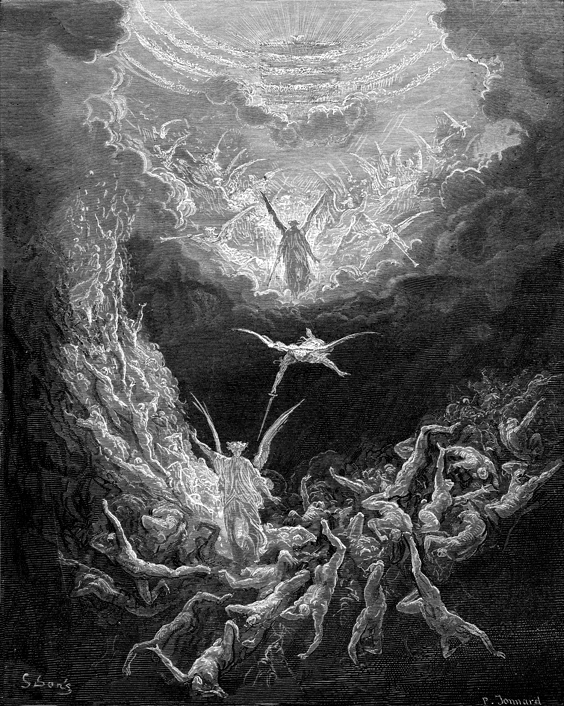
CHAPTERS 17-22
The guiding angel—who is revealed to be one of the seven trumpet angels with the bowls of wrath—carries away John “in the Spirit” for this final section of Revelation. The angel’s behavior (and likely divine appearance) is the reason Dr. Gieschen suspects John sought to worship him. His guide is clearly closely connected with the Holy Spirit, either as His servant or a manifestation—though of course the angel redirects John’s focus: worship God on the throne, not me. His refusal teaches us something: that worship is always to be directed to the Trinity, especially the Son as the visible God.
The vision presents two women: the prostitute (Babylon) and the bride of Christ (New Jerusalem). Those that worship a false god are part of this prostitute. That she is a human figure shows that this is a very personal problem; that she is also a city shows that this is a group problem. The prostitute is wealthy and arrayed in outward glory, but her idolatry and self-indulgence leads to destruction and death.
The marriage supper of the Lamb follows the destruction of Babylon. On this side of heaven, the bride of Christ is often humiliated, but now her restoration is at hand as the wife of the Lamb. The two women are a warning and comfort: to those believers who suffer greatly on earth, they will be restored when God brings His judgment—both wrathful against the prostitute, drunk with the blood of the saints, but also gracious. He gives the bride a future she doesn’t deserve, and the gracious gift of the new heaven and new earth.
“There’s a lot of gates into the New Jerusalem,” Dr. Gieschen said of the 12 gates in the high walls. “It’s symbolic of the access we have to this eternal reality of the new heavens and the new earth.” Together the 12 gates (inscribed with the names of the 12 tribes of Israel) and the 12 foundations (with the names of the 12 apostles) show that both the faithful of the Old Testament and the New Testament are a part of this New Jerusalem.
Chapter 20 presents another example of the angel as Christ, whose identity is in the details. He has authority, since He holds the key (“I have the keys of Death and Hades” from 1:18). This is also not the first time Christ speaks of binding Satan (here presented with all of his titles—the dragon, the ancient serpent, the devil and Satan). In Matthew 12, Jesus asked how He could be casting out demons unless He first enters the strong man’s house and binds him.
Chapter 20 is prone to misinterpretation. “The number one problem is reading 20:1-6 as chronologically following 19. View it as a flashback, in light of what Christ did in his earthly ministry to limit Satan’s power.” It answers the question of how Satan came to be thrown into the lake of fire. “First he was bound [through Jesus’ death and resurrection], then Christ reigned, then He brought about Satan’s end.”
Since we are still in the time of great tribulation following Christ’s first coming (who is already reigning for the symbolic thousand years), Satan is yet only bound. “The chain doesn’t mean he can’t move or do anything,” Dr. Gieschen warned. “He has a realm and in that realm he’s very powerful. But outside of that, when we are in the Kingdom of God, he has no authority over us. We deny Christ and enter his realm and he’s very powerful.” As to the devil’s release from prison just before he’s thrown into the lake of fire, this is an indication that there will be an escalation against the Church right before the end.
Revelation 21 is then a beautiful picture—the climactic picture, as Dr. Gieschen put it—of the Book of Revelation. We began in heaven and now the book ends in heaven. “This is a restoration of what God created this world to be.” God walked with Adam and Eve in the garden. He will dwell with His people once more. “He won’t annihilate this world; it was corrupted by sin. He will restore it. The end time will look a lot like the first time.” And once more we have this promise: he will wipe away every tear from their eyes. “Behold, I am making all things new.”
In Revelation 22, we are told that we will still have the name given to us in baptism. “He has given us His name, His own righteousness.” Dr. Gieschen said. “We don’t have to worry that we’ll die in His presence. The name of God is an outward mark of that. It’s very important imagery in Revelation.” The final chapter of Revelation also offers us a promise, repeated by Jesus three times, in verses 7, 12, and 20:
“I am coming soon.”
The Church’s response follows: “Amen! Come Lord Jesus!”
“It is one of the most ancient Christian prayers,” Dr. Gieschen said. “The prayer for the return, the coming of Christ. Answered in a preliminary way because, when we pray that, He comes to us. But we also pray that He will come in the ultimate way, on the last day, to bring restoration.”
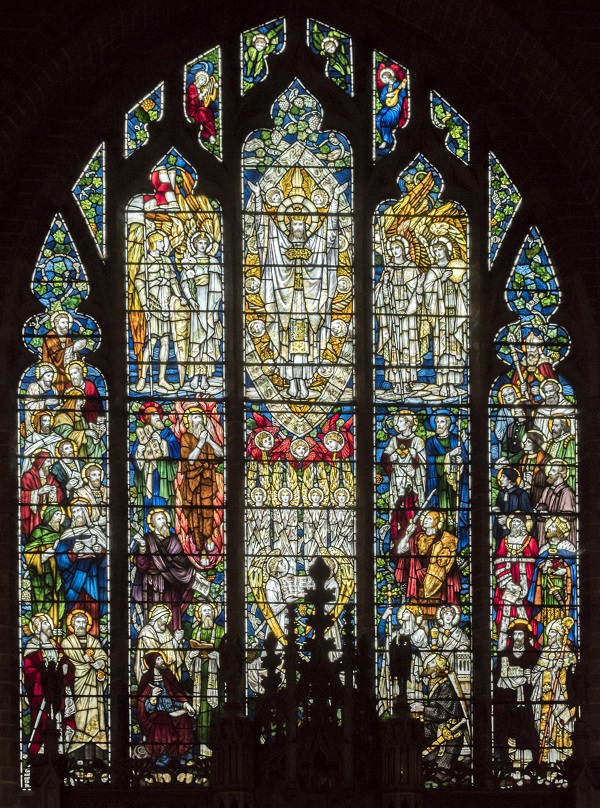
Full List of Dr. Gieschen’s handouts for his Fall Retreat presentations can be found here:
Angels in the Bible, Especially Revelation
Article on Millennialism (plus diagrams of millennial views)
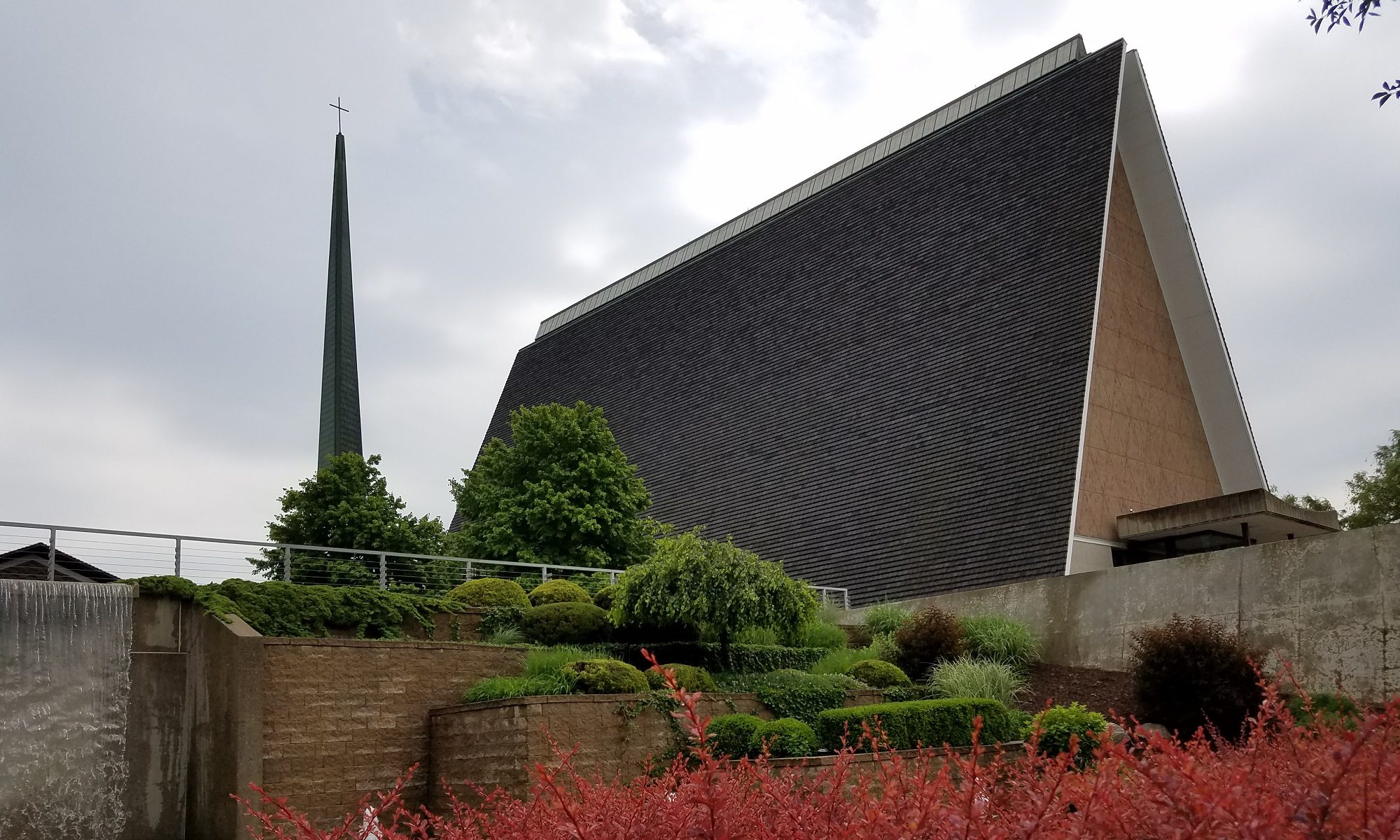
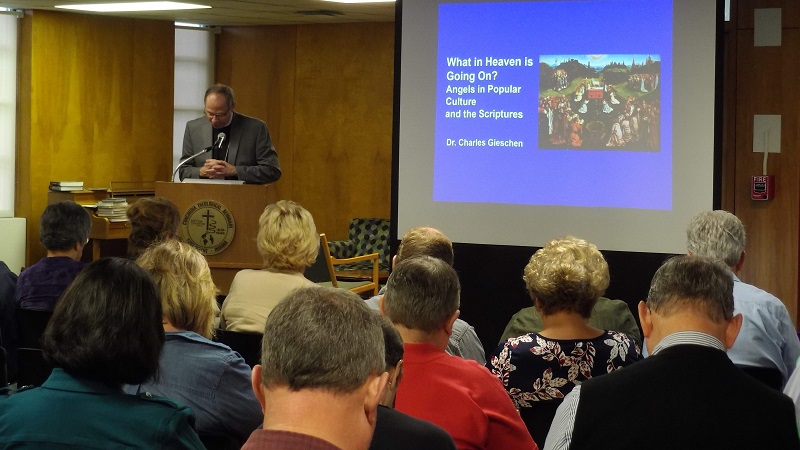
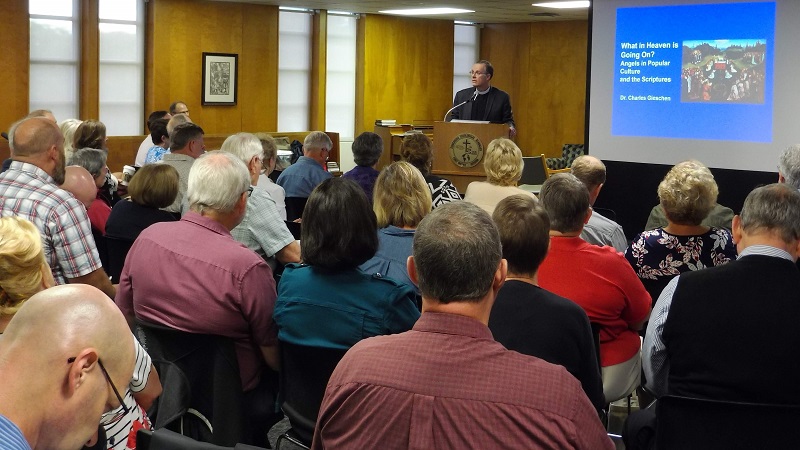

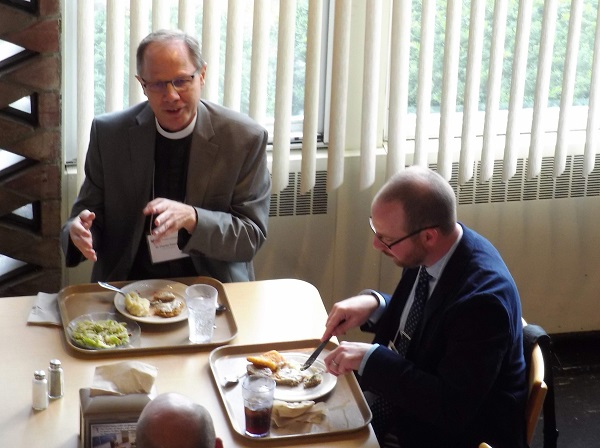
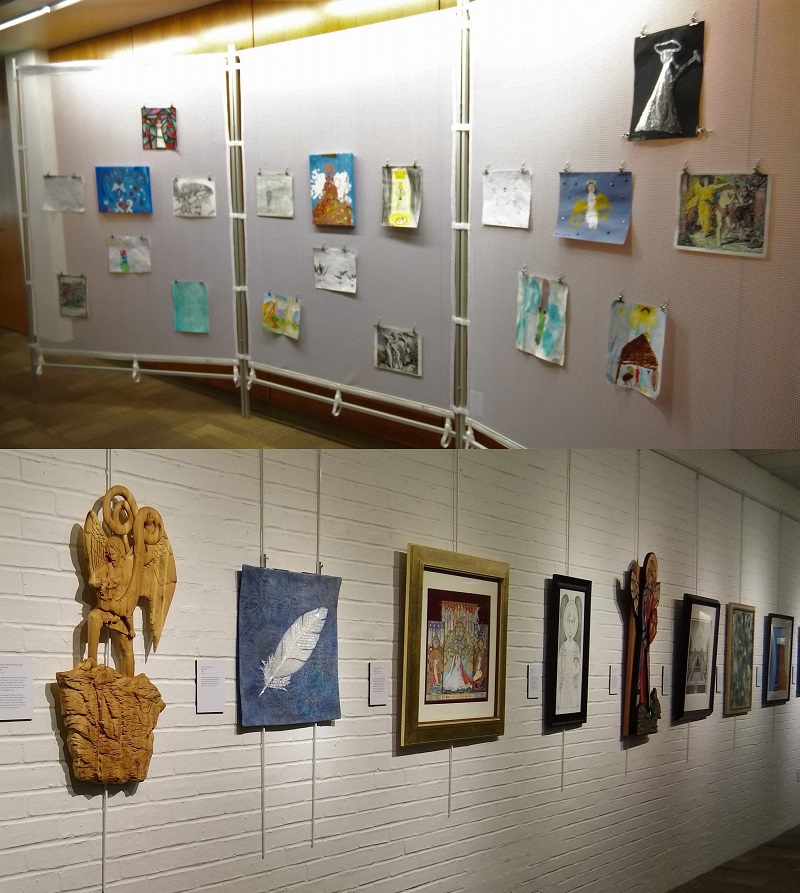
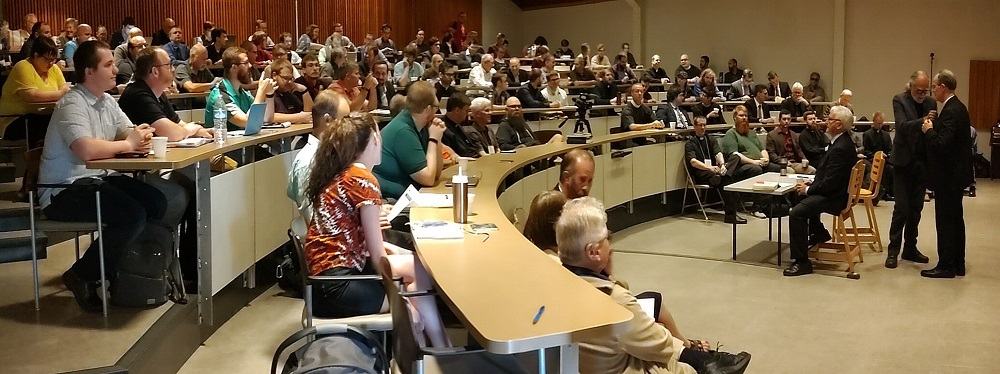
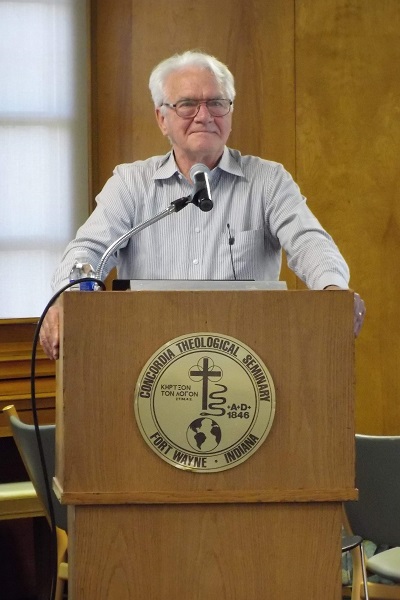
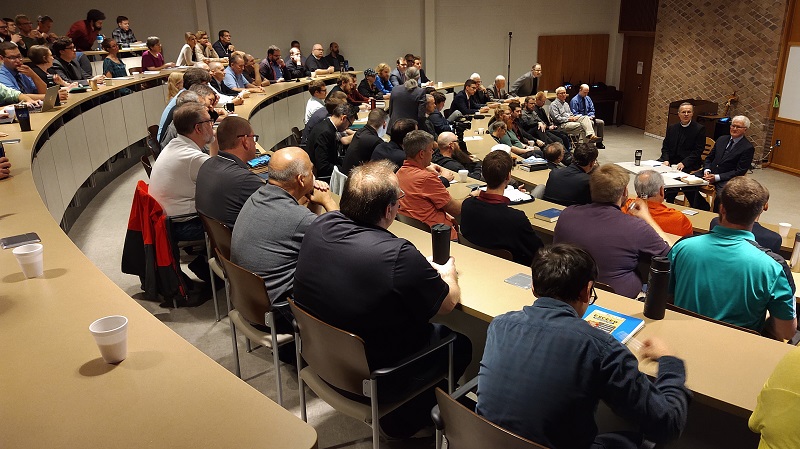
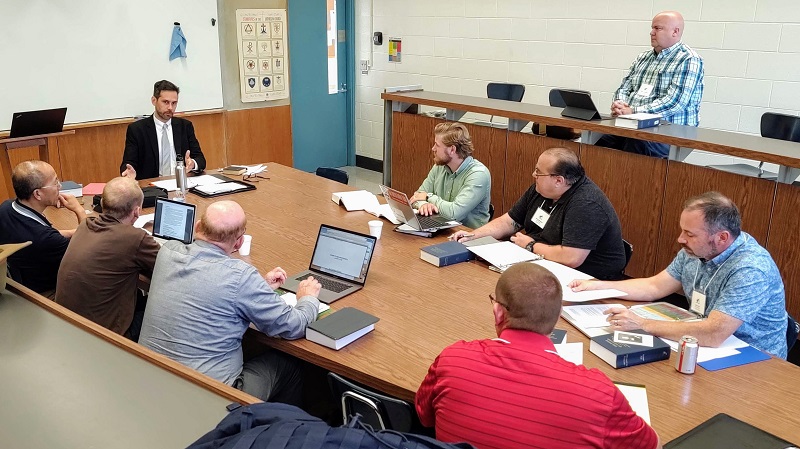
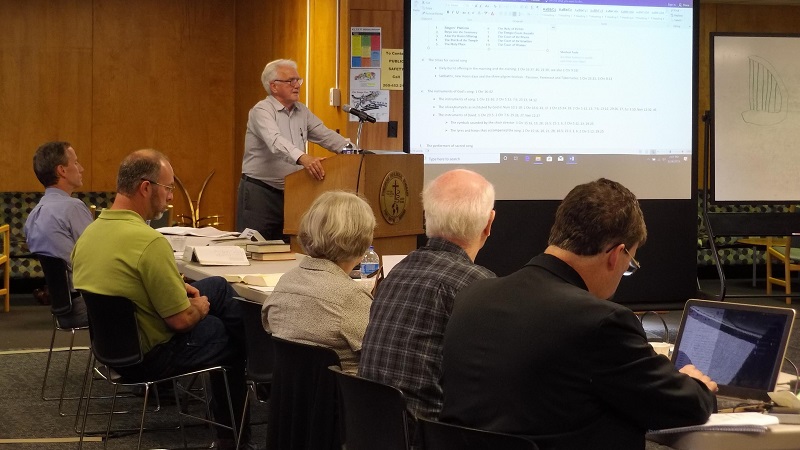
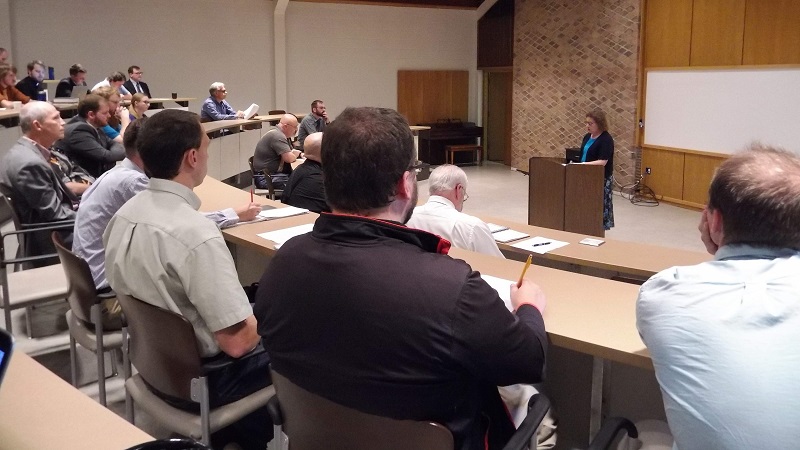
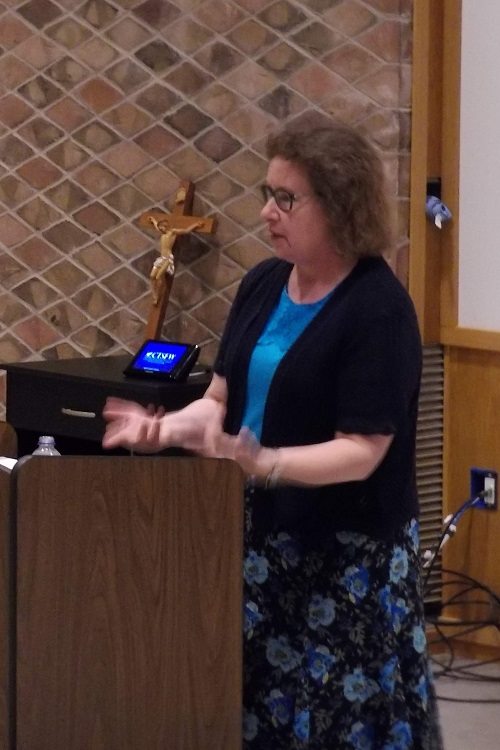 Mrs. Hart has no interest in politics. “It’s more important to win souls for Christ than it is to defeat any group politically.” Science, however, plays a significant role in the issue. Research offers both background to the discussion and hope to those struggling with the burden of these attractions. According to research, 1.4% of women and 2.8% of men have performed homosexual acts in the last year; 10-16% of men have practiced it at some point in their lives. The implications are clear: though media portrays all gay people as militant social justice warriors, many are simply ordinary people who do not want these attractions—and if the statistics are to be believed, many lose them.
Mrs. Hart has no interest in politics. “It’s more important to win souls for Christ than it is to defeat any group politically.” Science, however, plays a significant role in the issue. Research offers both background to the discussion and hope to those struggling with the burden of these attractions. According to research, 1.4% of women and 2.8% of men have performed homosexual acts in the last year; 10-16% of men have practiced it at some point in their lives. The implications are clear: though media portrays all gay people as militant social justice warriors, many are simply ordinary people who do not want these attractions—and if the statistics are to be believed, many lose them.
